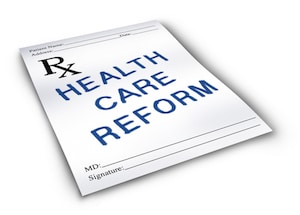Hospital Marketing: Medicare Payments Collide with Delivery System Reform
 It would be difficult for the general public to miss the daily torrent of news media coverage about the run-up to the next presidential election. But hospital administrators and healthcare communications professionals are focused on Health and Human Services' increasing emphasis on “quality-based payments,” “patient-centered systems” and “delivery system reforms.”
It would be difficult for the general public to miss the daily torrent of news media coverage about the run-up to the next presidential election. But hospital administrators and healthcare communications professionals are focused on Health and Human Services' increasing emphasis on “quality-based payments,” “patient-centered systems” and “delivery system reforms.”
There’s far less mainstream news coverage about Medicare payments. However, this year’s goal of 30 percent value-based Medicare payments—up from the current 20 percent—is reportedly “the most dramatic shift in the program’s 50-year history.”
What’s more, news accounts report that by 2018, “half of all payments to Medicare would be judged on whether a patient is healthier, among other measures. In the current healthcare system, doctors are paid almost entirely by procedure.”
The long-view objectives—improving quality of care and outcomes, transparent and lower costs, and enhanced patient experience—are admirable. But immediate issues center on how to achieve the goals.
What does delivery system reform mean for healthcare marketing and communications?
Healthcare reform is a familiar and constant factor for hospitals and doctors. But some observers believe the industry is just at the beginning of a “sea of change.” The role of administrators, doctors and marketing executives will continue to expand as proactive communicators. For example:
Defining, delivering and measuring patient satisfaction will evolve even further in importance. With 20 to 50 percent of revenue at stake, the voice of the customer (patients) will expand as a weighted factor.
The message horizon broadens with coordination of care. The walls of a single facility no longer define patient-centered communications objectives. Incentives and integrated, “alternative payment models” inspire greater integration among providers including hospitals, physicians, home health agencies and nursing facilities.
The increasing need for better patient and public education. Patient-centered systems give the consumer a larger role and a stronger voice. Communicators have an obligation to inform the public they serve, and with it, an opportunity to shape consumer relationships and expectations.
Medicare is the largest payer in the nation’s health care system, and the continuing shift from volume to value is a clear and continuing objective. Medical systems, hospitals, group medical practices are all affected by dynamic system reforms and changes. And all need to continue to refine and improve their marketing playbook.
For an informed, but independent, discussion about ways to get ahead of these and other changes for healthcare marketing, give us a call. And for related reading, click through to:








